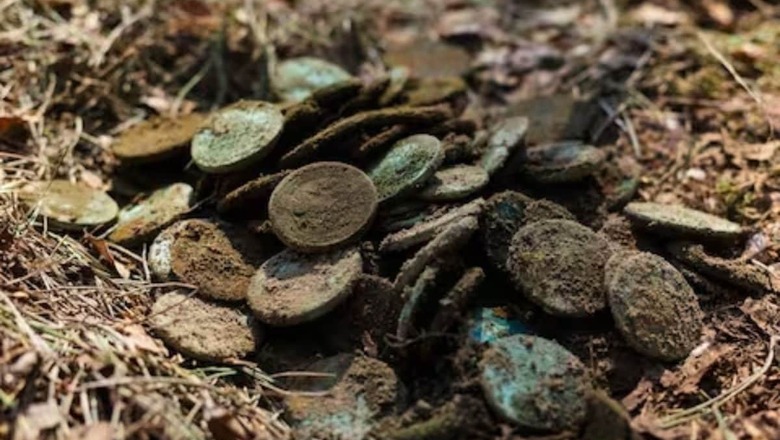
views
A collection of 122 Anglo-Saxon pennies, believed to have been buried by their owner who possibly died during the Battle of Hastings, is set to be auctioned. Unearthed by two metal detectorists in an Essex field near Braintree, it’s speculated that the coins, buried in 1066, were left untouched due to the owner’s demise in battle. With a significant value, the coins were not retrieved at the time. In 2019, the hoard of 144 coins was discovered, and following the guidelines of the 1996 Treasure Act, Colchester Museum and Cambridge’s Fitzwilliam Museum acquired 16 of them.
The museum’s acquisitions also featured two 11th-century Byzantine coins. However, in late 2023, the remaining coins were disclaimed and returned to the original finders. Now, 122 of these coins are scheduled for auction at Noonans Mayfair, with estimates suggesting they could fetch up to £180,000 (Rs 1.8 crore). The remainder will be retained by the metal detectorists. Believed to have been buried in 1066, within five years of all but two coins being minted, these artefacts carry significant historical value.
Noonans Coin specialist Bradley Hopper remarked, “While the deposition of the Braintree Hoard may not directly correlate with the events of 1066, the fact that it remained unrecovered certainly does. Twelve shillings constituted a substantial sum of money and its retrieval must have been hindered by significant personal misfortune. Although we cannot confirm whether the owner of the Braintree hoard perished in the Battle of Hastings, it presents an intriguing possibility.”
The two detectorists, who have been searching together for 20 years, had previously only uncovered copper coins and crotal bells in the field. However, on the day they discovered the hoard, a signal from the Minelab CTX 3030 metal detector unveiled a silver penny at a depth of four inches, which initially went unrecognised. Subsequently, half a dozen more pennies were found within a 30-metre radius and by evening, they realised they were rare pennies of Harold II. Over the next few days, approximately 70 more were unearthed through slow and methodical use of the detectors, with the remaining coins discovered in 2020 during a repeated search exercise.
Coins from the reigns of the last two Anglo-Saxon kings of England, Edward the Confessor and Harold II Godwinsson were minted in numerous towns and cities across the country. These include London, Cambridge, Canterbury, Ipswich, Chichester, Guildford, Worcester, Hastings, Lincoln, Huntingdon and Maldon. Additionally, rare mints such as Sudbury in Suffolk and Bridport in Dorset also produced these coins.



















Comments
0 comment